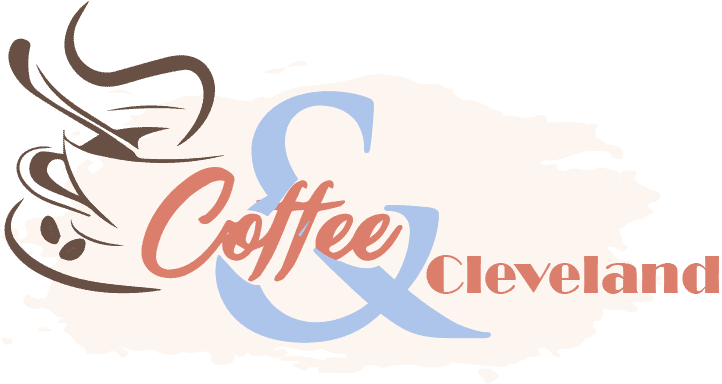Your first thought when getting a latte may not be the aesthetics. But seeing a well-done design on your latte will undoubtedly improve your coffee experience.
For the uninitiated, latte art is a creative process when making a latte. Essentially, the surface of your beverage is made into a design or pattern.
The latte comprises espresso, steamed milk, and milk foam. Usually, the milk component of the latte dictates the designs you eventually get.
Latte art isn’t all just for the looks. You get a better flavor balance and a smooth rounded texture of your drink with the art. It is also a means to express your creativity.
If you have wondered how you can make good latte art, you are in the right place.
We discuss here the types of milk you need for the venture. We will also provide useful tips to help you make it at home.
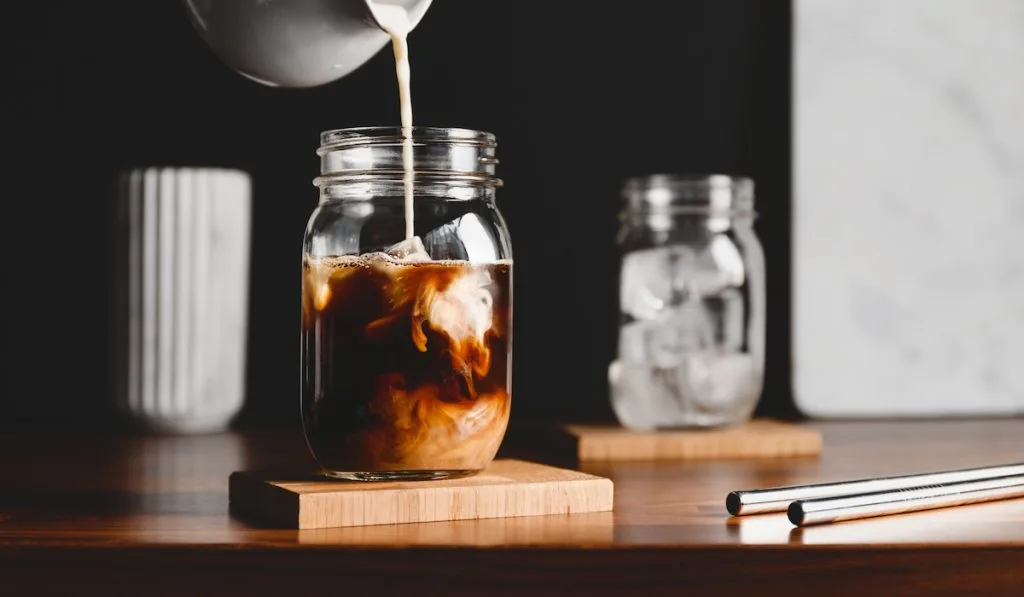
Types of Milk Commonly Used in Lattes
There are a lot of different kinds of milk that you can use in the production of lattes. The variety of these kinds of milk has a significant impact on the outcome of the latte.
While some types produce the perfect outcome, some are usually either too foamy or too creamy to achieve the intended purpose.
The different types of milk used in lattes are:
Dairy Milk
Dairy milk is the kind of milk gotten from dairy products. The most accessible dairy milk is cow milk, but milk from other animals like goats can also be explored.
The quality of milk varies from the kind of cow it comes from and what the cow feeds on, among other factors. Thus, a well-fed cow will produce better milk that will help you to make the best latte art.
Half-and-half milk has a high composition of fat, which makes it very creamy and dense, and as a result, you need a smaller amount.
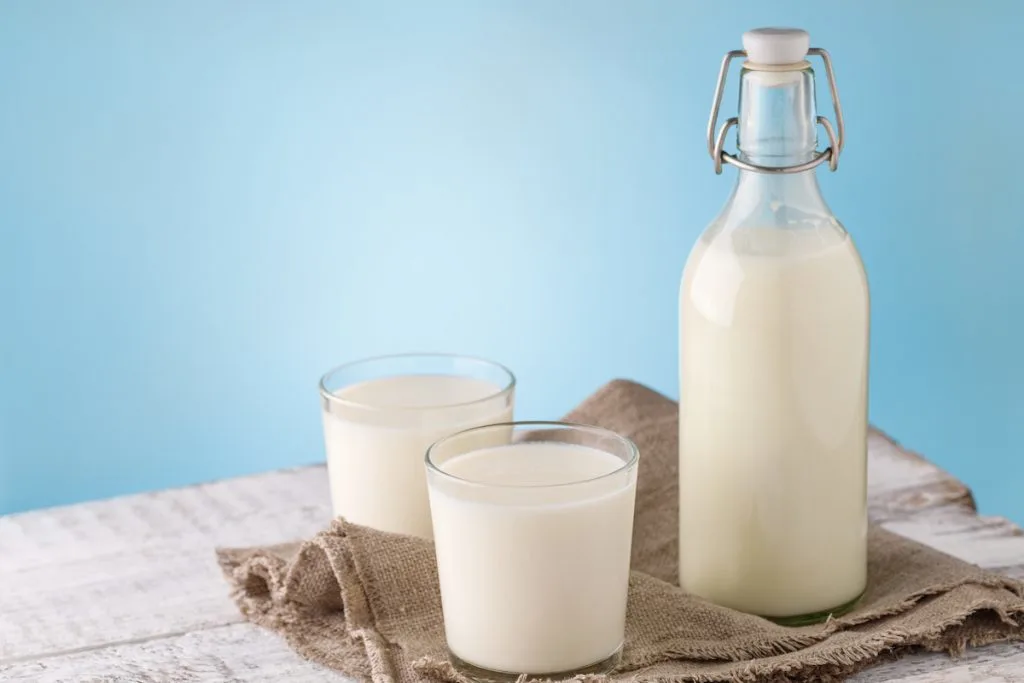
Whole milk has a fat composition of 3-4%. It presents the perfect taste and texture that you need for the intended latte art.
Reduced-fat milk, with a composition of 1-2% fat, can also be used. However, unlike whole milk, it is more watery due to the reduced fat content.
Skim milk has little or no fat, which inherently reduces the level of sweetness of the milk. This milk is loved because it helps the espresso to cut through the tongue more sharply.
Almond Milk
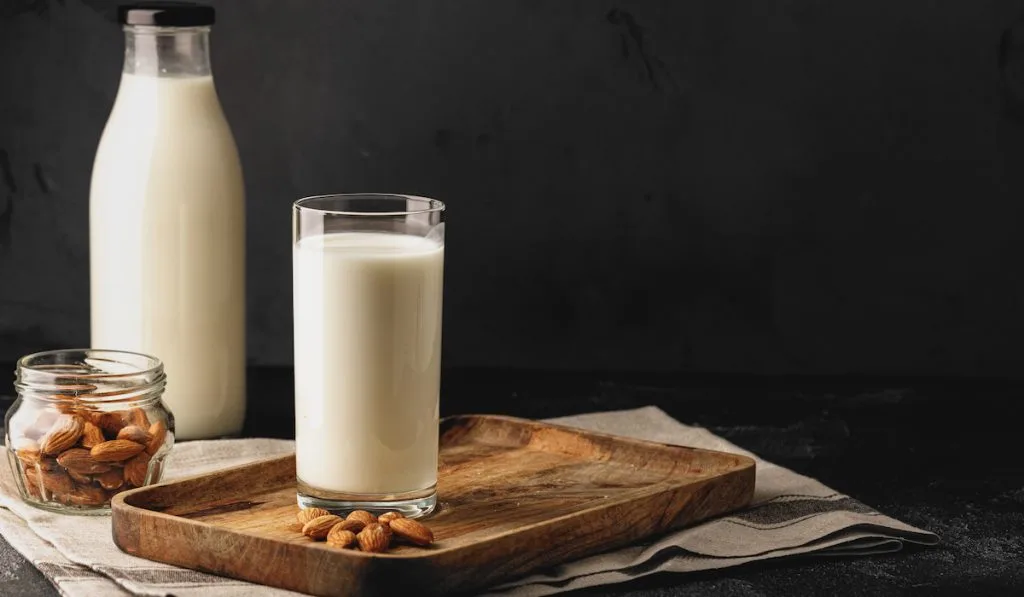
Almond milk is a healthy variant. It contains adequate proportions of proteins, calcium, and Vitamin D. Thanks to the rich almond flavor, you may not feel the need to sweeten the latte.
However, with its light texture, it could be harder to make latte art with almond milk. You may get away with gentle lines and simple art designs, but the perfect latte art may be impossible.
Oat Milk
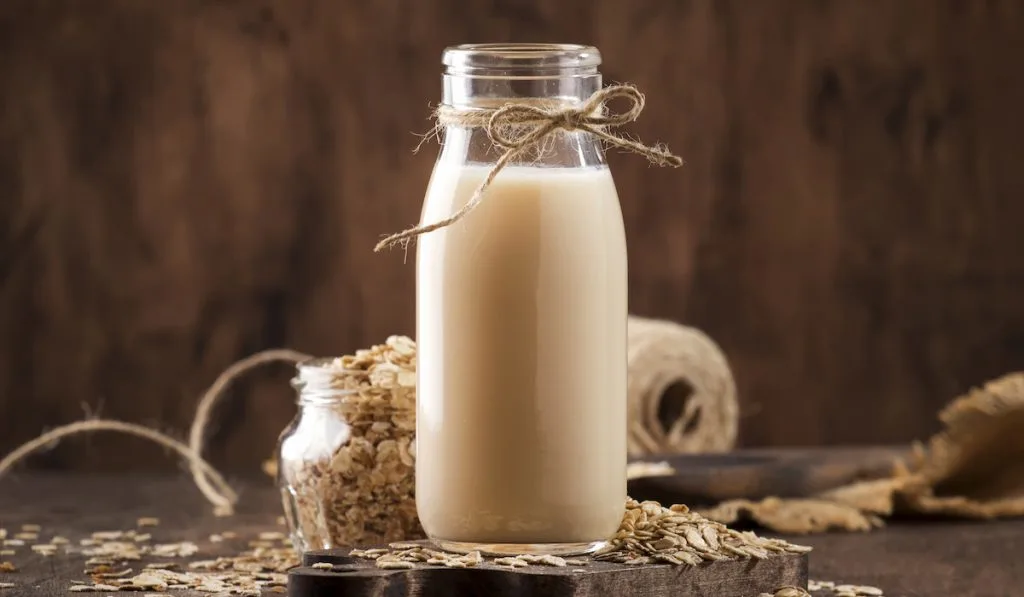
Oat milk is a kind of non-dairy milk that can be used to produce excellent latte art. You can comfortably make oat milk at home.
Though kind of flavorless with nutty tones, oat milk has the steaming, frothing, and pouring qualities that allow it to serve as a substitute to whole milk.
Hazelnut Milk

Hazelnut milk might pose some difficulty in getting an essential microfoam.
This milk can produce complex shapes, but a perfect, well laid out latte art might be far from achievable.
Cashew Milk

Cashew milk produces a somewhat thin foamy texture that disappears within a few minutes.
This milk produces an outcome that is filled with many bubbles that stay a few seconds before dissipating. This is not to mention the taste, which, compared to the nut itself, is not as sweet as one would expect.
When you make a latte with cashew milk, the outcome is usually oily and generally unimpressive.
Soy Milk
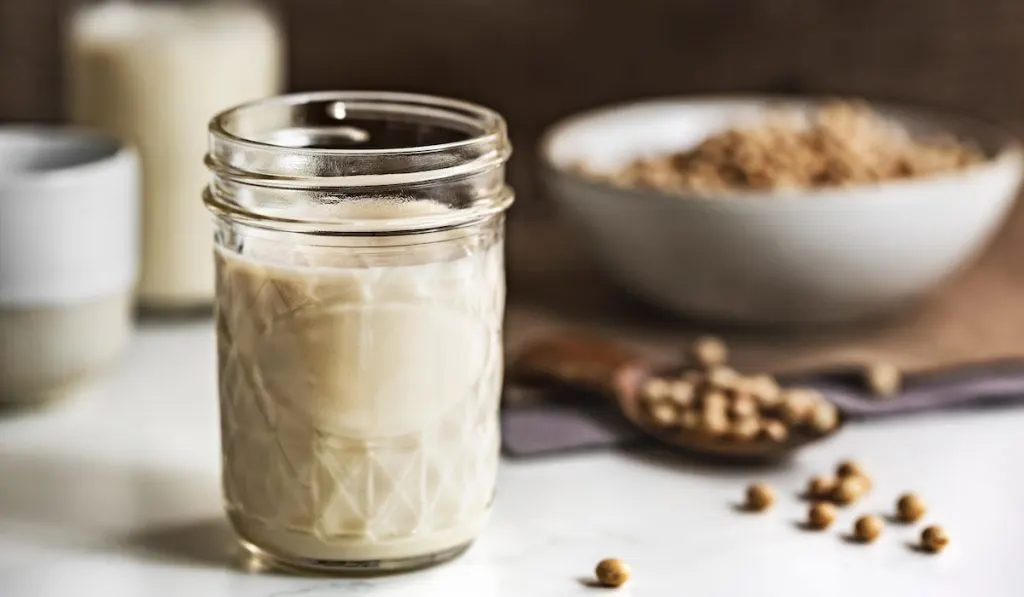
This milk, derived from soya bean, is also another commonly used alternative for making a latte.
Soya milk is creamier and thicker than almond milk, and it also froths easily. But it is still incomparable to any dairy milk.
Macadamia Milk

Macadamia milk gotten from Milkadamia has a nutty and enjoyable taste when used to make a latte.
The frothing and pouring towards making the latte is more or less a struggle. Though it makes bubbles, these bubbles are thin and not thick enough for regular latte art.
Goat Milk
As mentioned above, this is dairy milk that can be used to make latte art. Any form of dairy milk is best for a good latte.
The only side effect of goat milk is its taste as it retains a goat cheese-like taste that is not very pleasing on the tongue.
Rice Milk
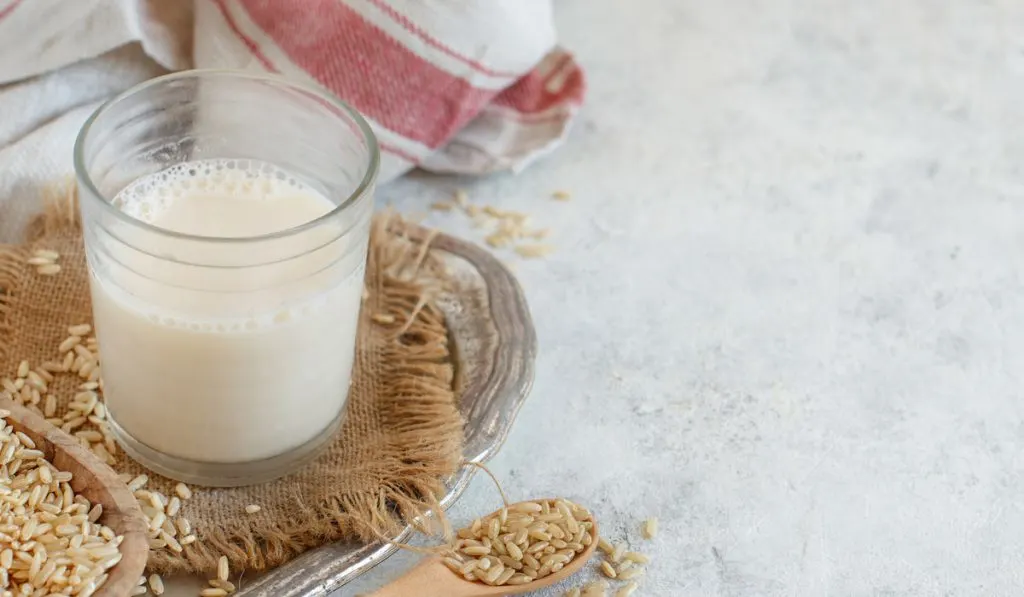
This type of milk doesn’t produce a favorable outlook as a barista would desire. The bubbles generated can be stretched but not to the desired extent.
Also, this milk has a bitter and sweet taste that can easily swallow the coffee taste.
Lactaid Milk
Lactaid milk is a dairy (cow) milk that is devoid of lactose. All other components of dairy milk, especially whole milk, are present.
Thus, it is one of the commonly used kinds of milk as it produces a near-perfect outcome and has a taste you can call syrup-like.
What Kind of Milk is Best for Latte Art?
Each kind of milk has a particular way it affects your latte art. Here, we will discuss your top options.
Best Dairy Milk
With the different options of dairy milk available, it is no surprise that you may want to use a type that best suits your needs.
So your preference of either low-fat, skimmed, or whole milk determines the best dairy milk for you.
Generally, coffee makers tout whole milk as the best dairy milk. They typically use it in preparing not just the latte but also other coffee types.
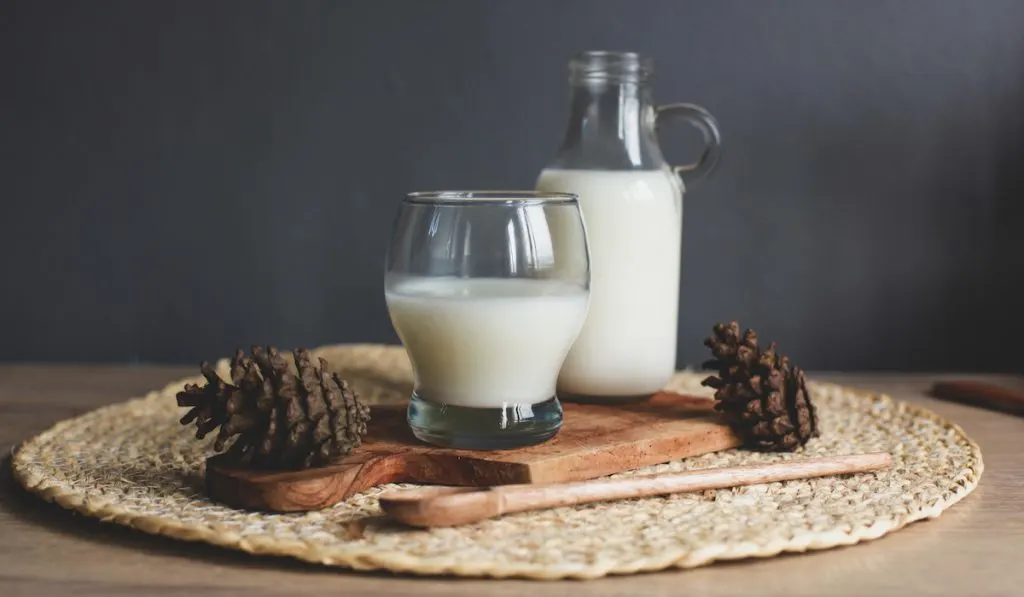
Whole milk has the best balance of proteins, fats, and other nutrients.
The combination also helps to provide a smooth microfoam without excessive creaminess. In the end, you get a solid milk texture and an excellently formed latte art.
Whole milk is highly recommended before any other type of milk when it comes to making lattes.
Lactaid milk is another one of the best kinds of milk for making latte art. This is because it shares the components of whole milk except for the lactose.
The absence of lactose may affect the taste of the milk. But the composition of fat, proteins, sugar, and water remains the same.
Best Non-Dairy Milk
Soy milk is arguably the most popular non-dairy milk all around the world. It is also one of the most available alternatives to dairy milk for use in your coffee.
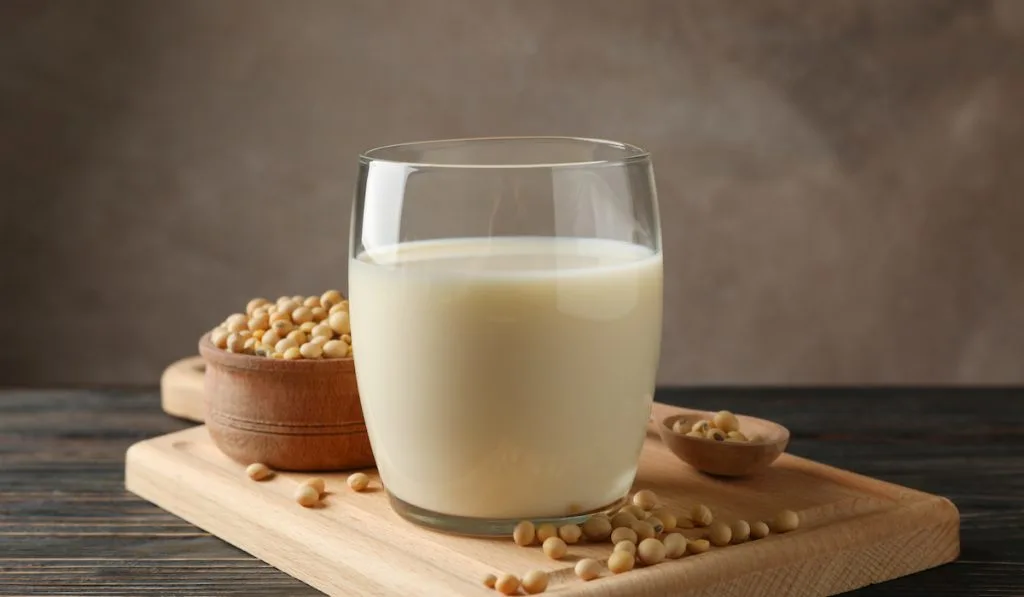
There are others like almond milk, which is poised to take over the soy variant. It comes as either sweetened or unsweetened and also sports different flavors.
It also doesn’t affect your hormones, as soy milk is reported to do.
Oat milk is another non-dairy milk that has the advantage of providing the texture of whole full-fat milk.
This milk is thick, and makes foam easily frothed while creating the perfect look. The taste is good, and it equally has a high level of protein.
With all the great choices available, you might find it difficult to pick one as the best. But you can rest assured that depending on your taste and health goals, there is an option that is just right for you.
7 Tips for Practicing Latte Art at Home
Making latte art is a fun activity to do. You can also get something very pleasing to look at out of it.
Getting an excellent result isn’t a cup of tea, and these tips will help you get the best results.
- Get your milk right in the texture and the foam.
- Watch the temperature of the milk.
- Do not neglect the crema. Mix it up properly.
- Pour while holding the cup at the right angles.
- Do not pour your steamed milk too fast. Neither should you draw it out for too long.
- Relax. Do not be in a hurry to get it done.
- Enjoy the process.
Resources
- https://honestcoffeeguide.com/posts/best-milk-for-latte-art/
- https://clivecoffee.com/blogs/learn/does-the-type-of-milk-you-use-matter
- https://urnex.com/blog/which-kind-of-milk-should-you-choose-for-coffee/
- https://www.wholelattelove.com/blogs/articles/milk-substitute
- https://foodal.com/drinks-2/coffee/guides-coffee/the-perfect-milk/
- https://www.farmdrop.com/blog/best-alternative-milk-coffee-latte-art/
- https://theprimadonnalife.com/coffee/coffee-101/how-various-types-of-milk-change-taste-of-coffee/
- https://cooking.stackexchange.com/questions/13273/does-milk-matter-to-achieve-the-perfect-latte
- https://www.roastycoffee.com/how-to-make-latte-art/
- https://www.baristainstitute.com/blog/jori-korhonen/october-2017/5-easy-tips-will-make-your-latte-art-flourish
- https://www.sevenmiles.com.au/editorial/latte-art-mistakes/
- https://coffeesesh.com/best-milk-for-frothing/
